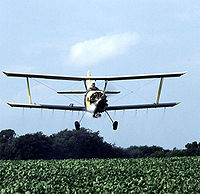In Duitsland zijn de producenten van bestrijdingsmiddelen wettelijk verplicht de jaarlijkse omzet voor binnen- en buitenland door te geven aan het Bundesamt für Verbraucherschutz und Lebensmittelsicherheit (BVL). Navolgend een overzicht van de omzet van insecticiden in het binnenland in 2005. Uit deze gegevens wordt niet alleen duidelijk dat Imidacloprid tot de meest gebruikte insecticiden behoort, maar ook dat de stof in vergelijking met vele andere insecticiden die worden gebruikt veel giftiger is voor honingbijen, veel langzamer wordt afgebroken in de bodem, en veel gemakkelijker wordt uitgespoeld naar het grondwater. Vergelijkbare gegevens voor Nederland zijn niet beschikbaar.
De extreme vervuiling van het Nederlandse oppervlaktewater met imidacloprid en de hoge bijensterfte in de Randstad is dan ook niet verassend. Ook de voor bijen zeer giftige neonicotinoide insecticiden Clothianidine en Thiamethoxam hebben een vergelijkbaar ongunstig milieuprofiel.
Omzet van insecticiden in Duitsland in 2005 (in tonnen), LD50 voor bijen (in nanogram, ng) tussen haakjes:
Dimethoat: 100 - 250 (120 ng, contact), non-persistent in soil, low leachability;
Methiocarb: 100 - 250 (230 ng, contact), non-persistent in soil, low leachability;
Imidacloprid: 25 - 100 (3,7 ng, oral), persistent in soil, high leachability;
Methamidophos: 25 - 100 (220 ng, oral), non-persistent in soil, transition state leachability;
lambda-Cyhalothrin: 25 - 100 (38 ng, contact), non-persistent in soil, low leachability;
Pirimicarb: 10 - 25 (4.000 ng, oral), moderately persistent in soil, transition state leachability;
Alpha-Cypermethrin: 10 - 25 (33 ng, contact), moderately persistent in soil, low leachability;
Beta-Cyfluthrin: 10 - 25 (1 ng, contact), non-persistent in soil, low leachability;
Delthamethrin: 2,5 - 10 (1,5 ng, contact), non-persistent in soil, low leachability;
Clothianidin: 2,5 - 10 (4 ng, oral), very persistent in soil, high leachability;
Thiacloprid: 2,5 - 10 (17.320 ng, oral), non-persistent in soil, low leachability;
Thiamethoxam : 2,5 - 10 (5 ng, oral), moderately persistent in soil, high leachability;
Dichlorvos: 2,5 - 10 (290 ng, oral), non-persistent in soil, low leachability;
Chlorfenvinphos: 2,5 - 10 (550 ng, oral), moderately persistent in soil, transition state leachability;
Pirimiphos-methyl: 2,5 - 10 (› 220 ng, oral), moderately persistent in soil, low leachability;
Fenoxycarb: 2,5 - 10 (› 204.000 ng, contact), non-persistent in soil, low leachability;,
Carbosulfan: 2,5 - 10 (180 ng, oral), non-persistent in soil, low leachability;
Tefluthrin: 2,5 - 10 (280 ng, oral), moderately persistent in soil, low leachability;
zeta-Cypermethrin: 2,5 - 10 (2 ng, contact), moderately persistent in soil, low leachability;
Chlorpyrifos: minder dan 1,0 (59 ng, contact), moderately persistent in soil, low leachability;
Lambda-Cyhalothrin: minder dan 1,0 (38 ng, contact), non-persistent in soil, low leachability.
Bron: Bundesamt für Verbraucherschutz und Lebensmittelsicherheit, D-38104 Braunschweig: Absatz an Pflanzenschutzmitteln in der Bundesrepublik Deutschland. Ergebnisse der Meldungen gemäss § 19 Pflanzenschutzgesetz für das Jahr 2005 (zie bijlage)
Milieu-eigenschappen van insecticiden uit IUPAC FOOTPRINT Pesticides Properties database:
http://sitem.herts.ac.uk/aeru/iupac/index.htm

- Login om te reageren
